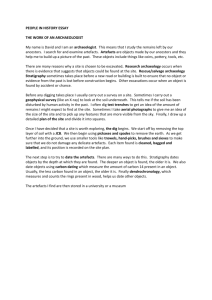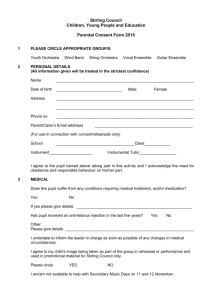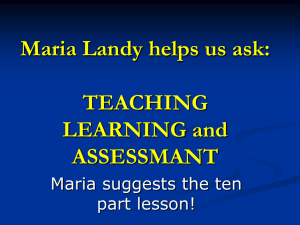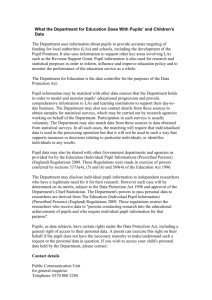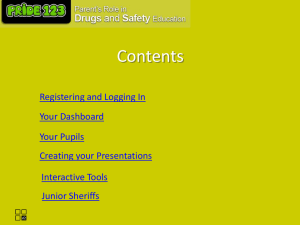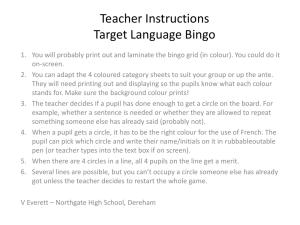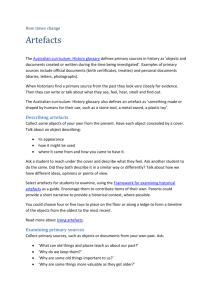Teaching children who don`t speak English
advertisement
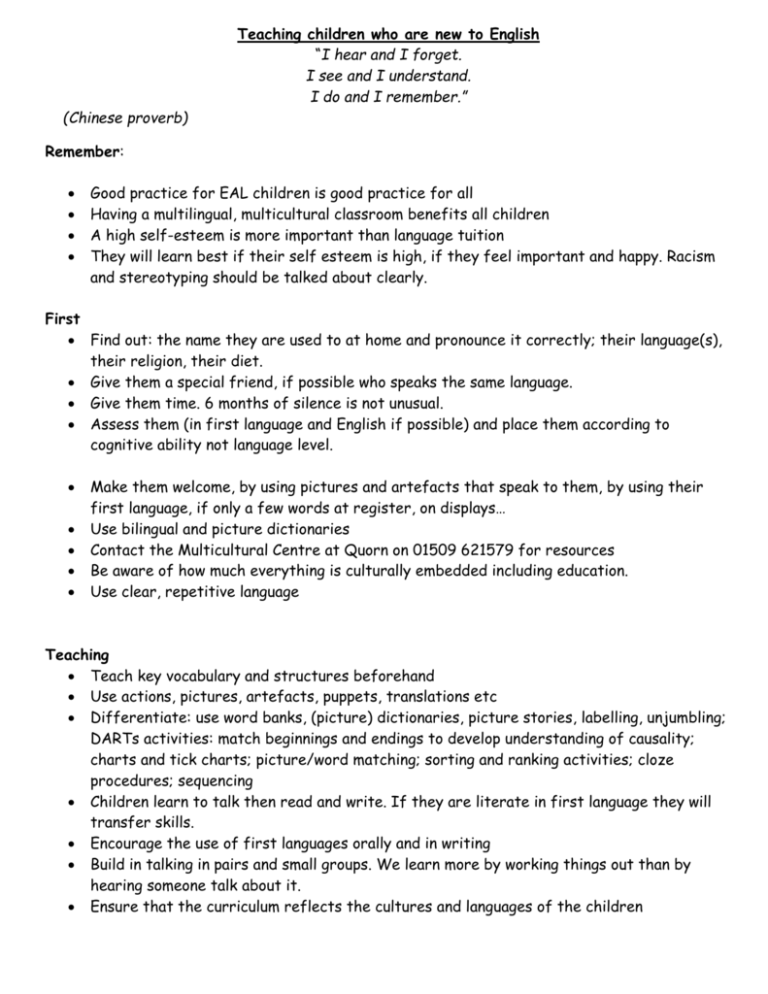
Teaching children who are new to English “I hear and I forget. I see and I understand. I do and I remember.” (Chinese proverb) Remember: Good practice for EAL children is good practice for all Having a multilingual, multicultural classroom benefits all children A high self-esteem is more important than language tuition They will learn best if their self esteem is high, if they feel important and happy. Racism and stereotyping should be talked about clearly. First Find out: the name they are used to at home and pronounce it correctly; their language(s), their religion, their diet. Give them a special friend, if possible who speaks the same language. Give them time. 6 months of silence is not unusual. Assess them (in first language and English if possible) and place them according to cognitive ability not language level. Make them welcome, by using pictures and artefacts that speak to them, by using their first language, if only a few words at register, on displays… Use bilingual and picture dictionaries Contact the Multicultural Centre at Quorn on 01509 621579 for resources Be aware of how much everything is culturally embedded including education. Use clear, repetitive language Teaching Teach key vocabulary and structures beforehand Use actions, pictures, artefacts, puppets, translations etc Differentiate: use word banks, (picture) dictionaries, picture stories, labelling, unjumbling; DARTs activities: match beginnings and endings to develop understanding of causality; charts and tick charts; picture/word matching; sorting and ranking activities; cloze procedures; sequencing Children learn to talk then read and write. If they are literate in first language they will transfer skills. Encourage the use of first languages orally and in writing Build in talking in pairs and small groups. We learn more by working things out than by hearing someone talk about it. Ensure that the curriculum reflects the cultures and languages of the children Classroom strategies and activities should: make the pupil feel secure and valued in the new environment allow the pupil to participate and interact help the pupil to achieve There are certain classroom 'do's' which will help right from the beginning: Prepare your class to be welcoming, and take time to explain that they have a complete and competent language of their own. Pronounce their name properly and try to greet them at the start of each session. Make sure they know your name. Introduce yourself and write your name for them. Prepare your classroom and make sure displays reflect an ‘inclusive’ approach through the use of multicultural and multilingual resources Make sure they are seated where they can see you. Non-verbal communication, mime and gesture are very important at this stage, but ensure they are not alone. Moderate the speed of your spoken delivery. Sit them with sympathetic pupils (mix of boys and girls and/or those who share the same language) who will be able to provide good language models and peer support with the work. (Is there a ‘buddy’ system?) Encourage them to use their first language. Use of the first language will support not hinder learning of English. All attempts at speech should be encouraged and praised. Give them the opportunity and enough time to respond to questions, starting with simple closed questions, but it's better to ask them AFTER they have heard another pupil 'model' a similar answer. Aim to include and involve them in classroom routines, such as giving out equipment and collecting books so they have the opportunity to make contact with other pupils. Provide scaffolding materials: a bilingual dictionary, picture prompts, writing frames etc. Set them according to ability not language level. If unsure, start them in a middle group. Strategies to access the curriculum: For lesson input: Provide visual support eg. pictures, artefacts, diagrams, drawings to help them understand lesson content. Model or demonstrate the use of key vocabulary and language structures: Also provide examples of expected outcomes-leave examples on board or give out a paper copy Repeat, demonstrate, clarify instructions for work ensuring they understand the task – leave notes/instructions on board or give out a paper copy Involve them in the class activities as far as possible while differentiating at their language level. If they are to build up their confidence they need to feel they can complete a task eg. copying words or sentences under pictures, worksheets with pictures, diagrams etc. matching pictures to names, words or sentences; cloze activities; sequencing; labelling; matching sentence halves; filling in tables and grids; giving yes/no, true/false responses; writing frames etc. worksheets with repeating language structures. Worksheets/tasks should have clues to answers which would then enable them to complete the task more independently. Collaborative activities are an opportunity for them to work/interact with their peers (who will provide good language models) and extend their language and thinking skills.


